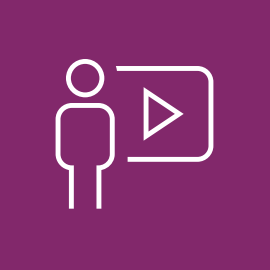Contents
The global pandemic has significantly raised awareness to the importance of internal communications as office-based firms sent their employees to work from home, altered their hours, or closed entirely. Without the ease of quick, in-person check-ins around the office, staying connected with employees is tricky.
When it comes to your organization and the people within it, the best thing you can do is have the right kind of internal communications strategy to remain connected to your workforce during times of uncertainty and beyond. The communications consulting experts at Computershare examined this topic more closely with a focus on how the pandemic has changed the way companies communicate with their employees about their share plan programs. As a partner to over hundreds of organizations, Computershare optimizes communications across the customer journey to ensure the most effective return on investment. Our multichannel communications platform enables us to deliver innovative solutions locally and worldwide.
It starts with our CommsX solution Exhibit A — a consulting methodology created by Computershare Communication Services to understand and evaluate the employee's journey and how best to communicate with them to achieve the objectives of your equity plan. Our five-step process combines consulting, solution design and delivery to take a deep dive into your existing enrolment data and employee personas to understand and improve the employee experience and achieve the company objectives.
Exhibit A. CommsX Solution

- Objectives and success measures
- Customer job-to-be-done
- Persona snapshot
- Data review and insight validation
- Journey map and Comms evaluation
- Confirm current technology, process
- Best practice benchmarking
- Discovery workshop
Discovery Phase. Understanding your audience
Through the CommsX solution, the methods were used to understand employee needs—a persona snapshot to identify personas for both the company and employee and a journey map to understand the changes employees are experiencing and identify the best ways to reach them. Three types of business impacts were identified ranging from heavily reduced business (many employees have been temporarily laid off but are still eligible for benefits), reduced business (the market/stock price is unstable and/ or continues to change in the current environment) to increased business (the business is doing very well at present) as described further in Exhbit B.
Exhibit B. Company Personas
Heavily reduced business

Company Status:
- Staff majority: Furloughed
- Outlook: Uncertain, share price has taken significant hit
- Example: Traditional retail, Leisure, Oil & Gas
Reduced business

Company Status:
- Staff majority: Working from home
- Outlook: Confident that business can return to a new normal in the medium to long term. Share price has been volatile.
- Example: Financial Services
Normal or increased business

Company Status:
- Staff majority: Working environment unchanged
- Outlook: Positive, revenue has increased in this environment. Share price has been stable/positive
- Example: Online retail, Pharma
Identifying Employee Personas
We then identified four employee personas within these groups as described in Exhibit C ranging from furloughed employees (individuals concerned about job security; unsure of who to contact for help), employees working from home (staff are connected but in a different way; worried about stock price but feels fortunate to still have a job) and essential workers (working as usual) to returned to work (staff are back in the office, but may be nervous to be working in this type of environment and close to other individuals; interested in understanding what they can do with their shares).
Exhibit C. Employee Personas
Daniel – Furloughed

Employee Status: Furloughed
Contact: No access to work email or intranet

| Disconnected |

| Job security |

| Reduced salary |
Aisla – Working from home

Employee Status: Salary reduced by 10%
Contact: Access to work email, intranet/work phone

| Connected |

| Job security |

| Reduced salary |
Richard – Essential worker

Employee Status: BAU
Contact: Access to work email, intranet/work phone

| Connected |

| Job security |

| Normal salary |
Julia – Returned to Work

Employee Status: Returned to work, now BAU
Contact: No previous access, full access now restored to work email, intranet/work phone

| Connected |

| Job security |

| Normal salary |
We learned that it is key to consider the circumstances of the employees when considering how to communicate. Within businesses, different groups of employees may have been affected differently by the pandemic and so the way you consider communicating with them would change. They have varying needs and want different things from their employers. So how do companies go about communicating with this diverse audience while also giving them the communications experience they want?
Our Solution. What should you change to better communicate your employee share plans?
The solution lays in the methods, or ways, in which you communicate. Let's review the four communication channels commonly used for delivering key messages to employees. These are physical media, in person, one-to-one and one-to-many communications. A blend of these type of communications channels worked well when most employees were situated in offices, working side-by-side. But today, where remote working has become the front runner, we know that most employees are no longer face-to-face every day and require a different kind of communications approach—one that is more digital, accessible and personalized like the illustration in Exhibit D.
Exhibit D. Communication Changes Driven by Pandemic

Move to digital
In a recent report, McKinsey found that, during the pandemic, businesses vaulted five years in their digital adoption in the space of eight weeks, with many businesses using digital channels for the first time during the pandemic.
You only need to look at the numbers to see that collaboration with digital tools is the new norm. In December 2019, Zoom had 10 million daily meeting participants. This rose to more than 300 million by April 2020—just four months later. Meanwhile, Microsoft reported more than 40 million daily active Skype users in April, up 70% from March. In a survey by Asana, nearly two-thirds (62%) of full-time knowledge workers in Australia said they have increased their use of collaboration tools since working from home.
The good news is that many digital tools exist to help companies stay connected with their remote workforce. Tools like Slack, Skype, Gchat, Teams, etc. can help replace quick office check-ins and allow employees to get fast answers to questions without wasting time setting up a call. Video calls/meetings (Zoom, Google Video, Skype, etc.) are another good way to keep people connected in the company while everyone's apart.
Within the Computershare business and our clients' businesses, we have seen a rapid shift to digital communications and online channels for employee benefit fairs, townhalls, ESPP open enrolment and many other essential employee share plan communications. Where employees can't physically be in the office, we recommend companies bring the office to them in their homes through an increased use of one-to-one and one-to-many communications as described in Exhibits E and F, e.g., more email and SMS campaigns and townhalls held via live video or webinar.
Exhibit E. One-to-One Communications

Emails
Email campaigns being sent to explain the benefits of joining a plan or other information.

Letters/Postcards
Printed letters/postcards sent direct to employees with no online access with information about a plan.

SMS Text
SMS text messages being sent to direct the eligible participant to find out more information through a dedicated link.
Exhibit F. One-to-Many Communications

Microsites & Brochures
Microsites & Brochures are a source of information for employees to find out more about the plan.

Educational Videos
Educational Videos or audio podcasts explaining what the benefits of the plan.

Webinar
A webinar session to allow employees to get information and ask questions about their plan.

Digital Banners
Use of banners within the app or push notifications to direct employees to locate additional information.
The key here is to make it as easy as digitally possible for your employees to stay informed about your program, find all the materials and information they need without having to look for it and offer ways for employees to contribute to the conversation, e.g., live Q&A sessions, to not only drive engagement but enhance trust and understanding.
The power of personalization
The pandemic has only reinforced how important it is for companies to provide open and honest, transparent and timely employee communications. A recent Article from "Human Resource Executive" highlights a survey where 69% of employees surveyed labelled COVID-19 pandemic as the "most stressful time of their entire professional career."
Further, the powerful learnings from the CommsX study highlight the importance of creating communications that capture the attention of employees based on their unique needs and cover topics that are most important to them about your share plan offerings, e.g., how to reduce ESPP contributions due to a reduction in pay. Employees expect you to understand their needs and provide relevant information to build trust and understanding.
Personalization is one of the cornerstones to creating great content and employee engagement. Make sure that personalization is built into your communications at all levels and for every interaction as it shows that you are taking extra steps to interacting with your employees. We recommend segmenting communications by persona (furloughed, working from home, essential worker, returned to work), type of worker or region to ensure messaging is appropriate (see example Exhibit G) and including imagery-realistic photo stock based on your industry or visuals employees can relate to, to reinforce personas and strengthen trust.
In a world where many employees fear for their health and job security, transparent and open communications help employees feel engaged, respected and supported. Businesses that keep empathy at the heart of their internal communications strategy, framing messages to your employees' current situation and/or reflecting their personal circumstances, are most successful.
Exhibit G. Tone of Voice and Personalization


In conclusion
Navigating through uncertain territory can test the most seasoned communications professionals. It's only through an effective internal communications plan that you can drive employee trust, education and awareness. An internal communications plan that includes these four core components:
- understanding your company's current situation
- analysis of your employee base
- consideration of how best to reach your employees and communicate your message
- selection of proper communication channels and inclusion of personalization, visuals that resonate with employees and proper tone of voice will ensure the most favourable outcome for all parties.
Let's Talk
For more than 40 years, Computershare has been a premier provider of solutions for equity plans administration. Fill out the form below to speak to a member of our team.